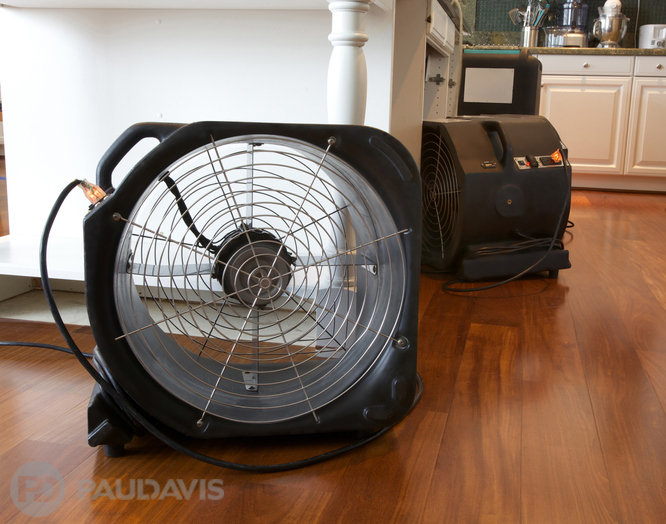
Drying seems simple and automatic to many of us. Hang laundry outside and it dries. Paint a wall and the paint manufacturer tells you how long to wait before reapplying. Press “heated dry” on a dishwasher and voila: dry dishes. For restoration after a flood, however, drying materials is a complex process. Paul Davis technicians manage this type of ‘drying’ restoration with precision that includes cutting-edge technology, standardized operating procedures and scientific measurements.
“Paul Davis flood restoration technicians are experts in the science of drying, also called psychrometrics,” explains Matt Wildt, Technical Trainer for Paul Davis. “They deal with a lot of variable conditions in the field and must select the right restoration approaches, equipment types and techniques for every situation. It takes a lot of training and practise to know what works best. The science is constantly advancing, too, so our teams are always learning and evaluating new options.”
Wildt described some of the highly effective approaches Paul Davis employs for drying:
Evaluate the Source. Flood waters may be clean water (Category 1); “grey” water (Category 2), which is water that has been lightly used for activities like washing; or “black” water (Category 3), which is grossly contaminated with substances like chemicals, sewage and dangerous microorganisms. Paul Davis teams use very different products and processes to dry clean water floods – using containment measures to prevent spreading moisture, deploying high-volume fans and donning light protective gear – versus black water floods, which require heavy protective gear, disinfectants, controlled access for safety, careful management of air movement, and the like.
Track Water Movement. Skilled technicians understand how water moves through different materials and building systems, which helps pinpoint exactly where drying is needed – including concealed areas such as within walls and heating ducts - how wet each material is likely to be and the likely duration of drying processes.
Choose Suitable Processes: Paul Davis teams deploy a wide range of drying techniques. They mask wet areas to separate them from dry areas. They speed moisture removal by selecting equipment types and settings that suit varying levels of wetness. They situate equipment strategically for fastest drying and optimum air movement. Technicians also understand which materials can and can’t be dried successfully – when replacement is the only option – or when they must be moved for additional off-site processes like disinfecting and odour removal.
Apply Technology and Automation: Low-grain refrigerant (LGR) dehumidification, high-volume air movers, specialty drying equipment along with many new products and procedures are revolutionizing the science of drying. Technology and computers have advanced psychrometrics as well, enabling crews to accurately measure and track humidity levels, air temperature, air movement and rate of drying, as well as accurately balancing evaporative potential and dehumidification for fastest drying.
“These are just a few of the many ways we scientifically approach drying,” Wildt says. “As anyone who has taken a drying course with us knows, it’s a complicated topic that demands practise, study and research to master.”
